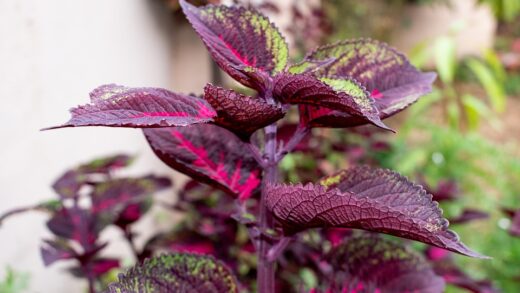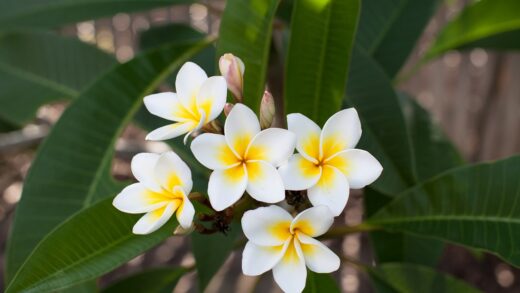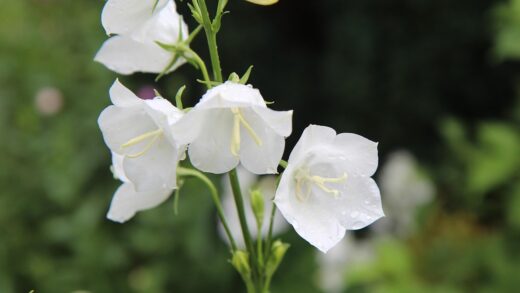The single most important environmental factor for cultivating a vibrant and structurally sound blue oat grass is an abundance of direct sunlight. This plant is a quintessential sun-worshipper, having evolved in the open, sun-drenched grasslands and rocky slopes of Europe. To achieve its iconic metallic blue foliage and maintain its tight, fountain-like form, it must be planted in a location that receives at least six to eight hours of full, direct sun each day. Insufficient light is the primary cause of disappointing performance, leading to a host of aesthetic and health issues that can be easily avoided with proper site selection.
When deprived of adequate sunlight, the physiological response of blue oat grass is immediate and noticeable. The plant will begin to lose its desirable blue coloration, with the foliage reverting to a less interesting shade of pale green or yellow-green. This color change occurs because the production of the waxy coating responsible for the blue hue is most pronounced under high light intensity. Without strong sun, this protective and colorful layer is diminished, robbing the plant of its most striking feature.
Beyond the loss of color, a lack of sun also profoundly affects the plant’s habit and structure. In shady conditions, the grass will stretch and become “leggy” as it reaches for any available light. This results in weaker, longer, and more flexible leaf blades that are unable to support themselves in the classic arching mound. Instead of a dense, tidy clump, you will end up with a sparse, open, and floppy plant that is prone to splaying apart from the center, creating an untidy and unkempt appearance.
Therefore, when choosing a location for your blue oat grass, it is imperative to prioritize sun exposure above all other factors except for drainage. Observe your garden throughout the day to identify the spots that receive the longest duration of direct sunlight. An open, south-facing location is often ideal. Avoid planting it near large trees, shrubs, or on the north side of buildings where it will be cast in shadow for a significant portion of the day. Providing the light it craves is the fundamental first step to a beautiful plant.
The role of full sun in plant health
Full sun exposure is not just about aesthetics for blue oat grass; it is also crucial for the plant’s overall health and vigor. The process of photosynthesis, by which plants convert light into energy for growth, operates most efficiently under high light conditions for a sun-loving species like this one. Ample sunlight fuels the development of a strong root system and sturdy foliage, which in turn makes the plant more resilient to environmental stresses such as drought and heat. A plant that is photosynthesizing efficiently is a healthy and robust plant.
More articles on this topic
Sunlight also plays a vital role in disease prevention. The intense sun helps to quickly dry any moisture from rain or dew off the plant’s dense foliage. This is particularly important for preventing fungal diseases like rust, which thrive in damp, humid conditions. In a shady location, the foliage will remain wet for longer periods, creating a much more favorable environment for fungal spores to germinate and infect the plant. Therefore, a sunny spot naturally helps to keep the plant’s leaves dry and healthy.
Furthermore, the strong growth encouraged by full sun contributes to a dense, thick clump. This density helps the plant outcompete weeds for resources like water and nutrients, reducing the need for manual weeding around the plant’s base. A weak, sparse plant grown in the shade will allow more light to reach the soil surface, encouraging weed seeds to germinate and creating more maintenance work for the gardener. A thick, healthy clump effectively acts as its own living mulch.
Ultimately, by providing the full sun that blue oat grass requires, you are creating an environment where it can perform at its best. This reduces the likelihood of problems with pests, diseases, and structural weakness. A plant that is sited correctly from the beginning will be more vigorous, more beautiful, and will require significantly less intervention and maintenance over its lifetime.
Impact of light on foliage coloration
The connection between light intensity and the foliage color of blue oat grass is direct and profound. The celebrated silvery-blue hue is not a pigment within the leaf tissue itself, but rather a structural color created by a waxy coating on the leaf’s surface, known as the cuticle. This wax layer, composed of complex lipids, scatters light in a way that our eyes perceive as blue-gray. The plant produces this waxy coating as a protective mechanism, primarily to reflect intense solar radiation and to reduce water loss in hot, dry conditions.
More articles on this topic
The production of this epicuticular wax is heavily influenced by the amount of light the plant receives. When exposed to high levels of sunlight, the plant is stimulated to produce a thicker, denser layer of this protective wax. This thicker coating results in a more pronounced light-scattering effect, leading to the most intense and brilliant silvery-blue coloration. This is a classic example of a plant adapting its physical characteristics to cope with its environment.
In contrast, when the plant is grown in lower light or shady conditions, it has less need for this protective, reflective coating. As a result, it allocates its energy elsewhere and produces a much thinner layer of wax on its leaves. With a thinner wax coating, more of the underlying green chlorophyll in the leaf tissue is visible, and the light-scattering effect is diminished. This is why shade-grown plants appear duller and more greenish, having lost the striking metallic quality that makes them so desirable.
Therefore, if your primary goal is to achieve the best possible color from your blue oat grass, maximizing its sun exposure is the non-negotiable solution. You cannot compensate for a lack of light with fertilizer or water; in fact, adding these can exacerbate the problem by encouraging even more green, floppy growth. The most vibrant blue is a direct result of the plant being happily stressed by the full, intense light it evolved to thrive in.
Consequences of insufficient light
Planting blue oat grass in a location with insufficient light leads to a predictable set of negative consequences that affect its appearance, health, and longevity. The most immediate and noticeable effect, as discussed, is the loss of color and the development of a weak, floppy habit. This structural weakness is a major issue, as it completely undermines the architectural purpose of the plant in a garden design. The beautiful, fountain-like mound is replaced by a disorganized and sprawling clump that can look messy and uncared for.
A lack of sunlight also makes the plant more susceptible to fungal diseases. In a shady, damp environment with poor air circulation, the foliage stays wet for longer, creating ideal conditions for diseases like rust and other leaf spot fungi. Furthermore, the weaker, softer growth produced in low light is more easily penetrated by fungal pathogens compared to the tough, hardened growth of a sun-grown specimen. This can lead to a plant that is chronically unhealthy and unsightly.
Over time, a blue oat grass that is consistently deprived of adequate light will begin to decline in vigor. It will produce less new growth each season, and the clump may become progressively smaller and sparser. The plant is essentially being starved of the energy it needs to sustain itself. In severe cases, especially when combined with other stressors like wet soil, the plant may fail to survive altogether. It cannot thrive in the long term without the energy provided by ample sunlight.
If you have a blue oat grass that is performing poorly in a shady spot, the best course of action is to move it. Transplanting it to a sunnier location in the spring or autumn can lead to a dramatic turnaround. Often, within a single growing season in a new, sunny home, a floppy, green plant can transform back into the vibrant blue, tightly mounded specimen it is meant to be.
📷: Drew Avery, CC BY 2.0, via Wikimedia Commons


















